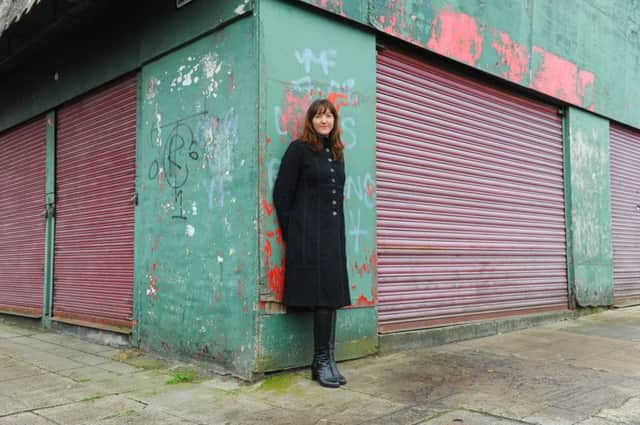Book review: Redemption Road by Lisa Ballantyne


Redemption Road
by Lisa Ballantyne
Piatkus, 437pp, £7.99
Lisa Ballantyne’s first novel, The Guilty One, was a popular success. Redemption Road is likely to be one too. Ballantyne has a natural gift for storytelling and the central narrative here is well-developed and fast-moving. She evidently cares for her principal characters, and, because she does so, readers are likely to do likewise.
There are two distinct narratives here, one set in 2013, the other in 1985. There is a link between them and they come together in the end. Nevertheless, there is always a risk in such time-shifts, readers being likely to find one narrative more interesting than the other. This is, I think, the case here, the earlier story being more gripping and convincing. The link between them depends on an outrageous coincidence, and an improbable ending to the 1985 story.
Advertisement
Hide AdNevertheless, the 2013 narrative is necessary, and Ballantyne writes with such confidence that the reader is likely to be carried along and to accept the coincidence and the hurried ending to the 1985 story.
In December 2013 Margaret Holloway, a teacher, is driving home in vile weather when she is caught in a motorway pile-up. Her engine bursts into flames. She is trapped in her car, and rescued by a badly-scarred stranger, who breaks the window and hauls her out through it. It will not be long until you guess who the stranger must be.
Cut to 1985 and a Glasgow pub where Big George McLaughlin is singing. George is a gentle man, illiterate, the product of an appalling upbringing. He belongs to a criminal family, his father Brendan being terrifying, brutal and violent. George, in contrast, is soft and a romantic. Seven years ago he was in love with a girl called Kathleen. She bore his child, but her parents, understandably, were horrified at the idea of her marrying a McLaughlin, and prevented her from doing so. She married another man who happily brought up the baby girl, Molly, as his own daughter. George, however, has never forgotten Kathleen. Now, his father dead, he takes no active part in the family’s criminal business run by his brothers. He has, however, been installed in a garage, where they send cars to be “cleaned”. One day, finding a huge sum in banknotes hidden in a car, he decides to drive north to Thurso where Kathleen lives. Surely she will leave her husband and return to him with their daughter? George is a romantic with little sense of reality. Things go wrong, but he kidnaps the girl and sets off south with her, his destination a cottage in Cornwall he has inherited from his mother. The heart of the story is the developing relationship between George and Molly on their road-trip, as her initial fear and reluctance are gradually replaced by something like affection and sympathy. The treatment of this development is tenderly and convincingly done. There may be some sentimentality in Ballantyne’s treatment of George. In an Author’s Q&A appended to the novel, she admits that she “fell in love with him”. Perhaps some readers may share this feeling.
The police at first look for a serial killer, responsible for the abduction and murder of other young girls. A local journalist, Angus, has other ideas. Angus, a bigoted Free Presbyterian, is an unlikeable character, narrow-minded, selfish and self-satisfied, but also a pertinacious one. He investigates Kathleen’s background, identifies George as Molly’s father, and gives chase, hoping for a scoop that will get him a job on a national newspaper. So George and Molly’s road trip is also Angus’s pursuit. And Angus will not represent the only danger to George when his brothers realise he has made off with the money. Back in 2013, Margaret is trying to unravel her submerged and traumatically lost past. There is not much tension about this, since it would be a very slow-witted reader who wasn’t several steps ahead of her. In truth, the 2013 sections of the book are not very interesting, and they include a couple of quite irrelevant scenes.
Ballantyne writes clearly, though she is rather too fond of unnecessary adjectives; why, for instance, in the first paragraph of the book, should streetlamps be described as “wary” and their light at four o’clock of a late December afternoon be said to be “premature”? But most of the time her prose gallops confidently along, though several scenes, especially those describing incidents in George’s childhood, are prolonged some way after their point has been made. A stricter editor might have improved what is nevertheless a very good example of the popular novel. It tells a good story and does so with conviction. Indeed, a good many more pretentiously literary novelists might learn something from it: the importance of narrative and of harnessing narrative to character. Ballantyne uses the journey taken by George and Molly as the means to develop our understanding of both. George is a fool and his abduction of his young daughter is selfish and frightening for her; and yet you are likely to come to sympathise with him, even to feel for him and, oddly, to respect him.
I haven’t read Ballantyne’s first novel. This one is engaging enough to make me wish to do so. She is a natural novelist and I would be surprised if she doesn’t have a long and successful career.